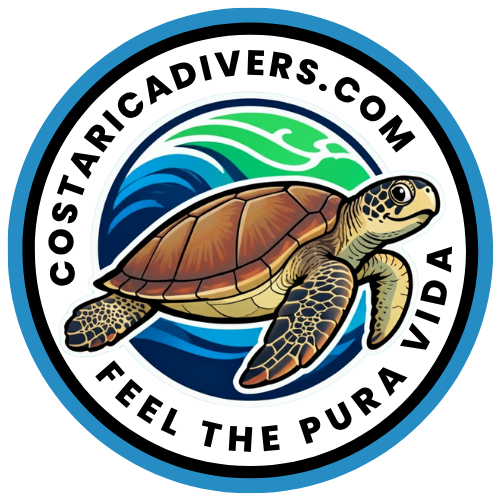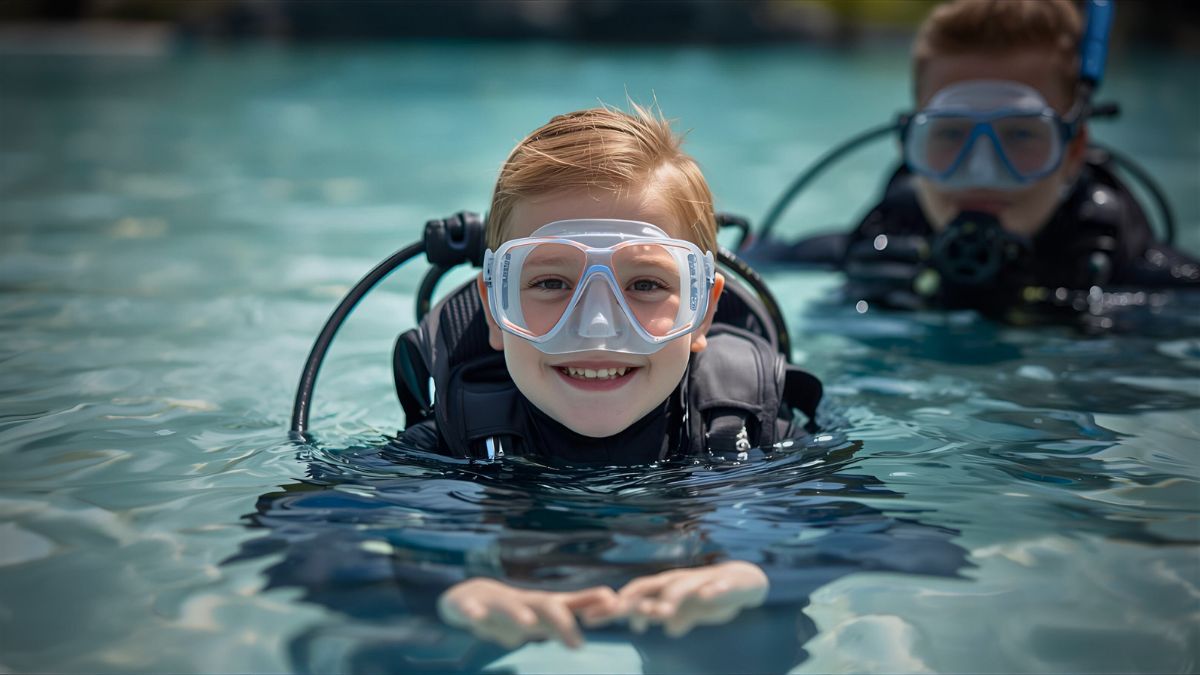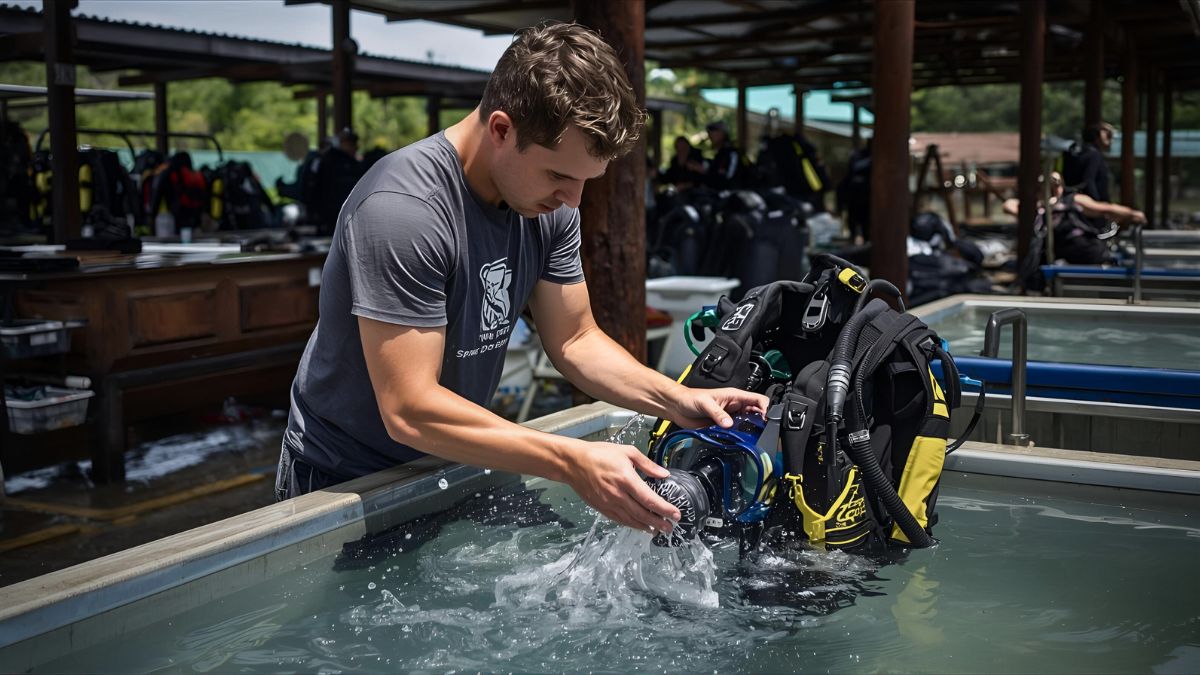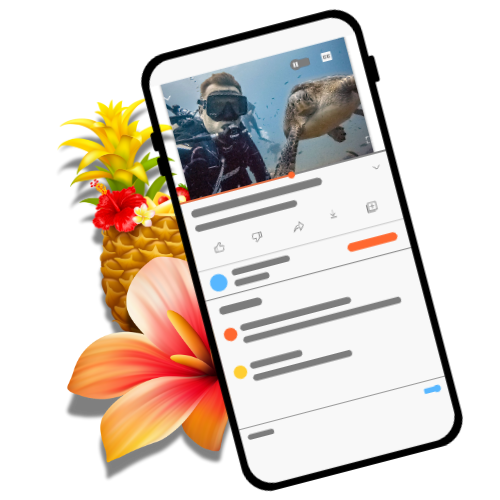When people ask me where to go in Costa Rica, I always smile. After years of taking divers out to some of the most beautiful spots along the Pacific coast, I’ve learned that this country packs more natural beauty into its small borders than seems physically possible.
From underwater caves teeming with sharks to misty cloud forests and active volcanoes, Costa Rica delivers experiences you won’t find anywhere else.
As a diving instructor based in Uvita, I spend most of my time exploring the southern Pacific coast. I’ve also traveled throughout the country, and these are the destinations that actually deserve your limited vacation time. This isn’t some algorithm-generated travel list. These are places I send my own guests when they ask where else they should explore.
The destinations I’m sharing range from world-class dive sites to terrestrial national parks bursting with wildlife. Some are well-known tourist hotspots. Others remain relatively undiscovered. What they all share is that authentic “pura vida” experience that makes Costa Rica unforgettable.
Why Uvita Should Be on Every Costa Rica Itinerary
I’m biased because Uvita is home, but there’s a solid reason I chose to base my diving operation here. This small coastal town sits at the heart of Costa Rica’s marine biodiversity hotspot, offering easy access to some of the best snorkeling and diving in the country.
What Makes Uvita’s Whale Tail Beach Unique?
The famous whale tail sandbar at Marino Ballena National Park is Uvita’s signature landmark. During low tide, this natural formation extends into the ocean, creating a perfect whale tail shape that you can actually walk along. The symbolism fits perfectly – Uvita ranks among the best places on Earth to see humpback whales.
Did you know? Costa Rica has the longest humpback whale season in the world. We see Northern Hemisphere whales from July to October and Southern Hemisphere whales from December to March, giving us nearly eight months of whale watching opportunities.
When Is the Best Time to Visit Uvita?
I tell my guests that any time is good, but the dry season (December to April) offers the calmest seas and best visibility for diving. However, the rainy season brings its own magic, lush green landscapes, fewer crowds, and still plenty of sunshine between afternoon showers.
What Can You Do in Uvita?
Beyond the whale tail beach, Uvita serves as a perfect base for exploring the region. You can snorkel right off the beach in Marino Ballena National Park, hike to nearby waterfalls, or take a boat tour to spot dolphins and sea turtles. The town itself maintains a relaxed, authentic vibe that feels worlds away from Costa Rica’s more touristy areas.
Isla del Caño: Where Should You Go for World-Class Diving?
Every time I take divers out to Caño Island, they surface with the same awestruck look. This biological reserve, sitting about 20 kilometers offshore from Uvita, consistently ranks among the best dive sites in Central America – and I’ve seen enough underwater spots to back up that claim.
What Can You See While Diving at Caño Island?
The marine life here is extraordinary. On a typical dive, we encounter white-tip reef sharks resting under coral ledges, massive schools of jacks that swirl around us like silver tornados, and sea turtles gliding past with lazy curiosity. Manta rays visit the cleaning stations. During the right season, you might spot dolphins or even whales from the boat between dives.
The coral reefs here are healthier than almost anywhere else along the Pacific coast. Caño Island’s protected status since 1978 has allowed its ecosystems to thrive while other areas have suffered from overfishing and development.
![What Are the Must-Visit Destinations in Costa Rica? [2026 List] » Costa Rica Divers What Are the Best Dive Sites at Cano Island](https://costaricadivers.com/wp-content/uploads/2025/11/What-Are-the-Best-Dive-Sites-at-Cano-Island.webp)
How Do You Get to Isla del Caño from Uvita?
We depart from Uvita every morning at 7:30 AM for the 45-minute boat ride to the island. The journey itself is part of the experience, we often spot dolphins playing in the boat’s wake, and during whale season, we sometimes have to slow down as humpbacks breach nearby.
What Should Beginners Know About Diving Caño Island?
I get this question constantly: “Can beginners dive here?” Absolutely. While Caño Island offers dives for all levels, several sites are perfect for newer divers. The visibility typically ranges from 60 to 100 feet, and currents are usually manageable. I always dive with small groups and provide thorough briefings, so even if this is your first ocean dive since certification, you’ll feel comfortable.
What Makes Corcovado National Park a Must-Visit?
National Geographic once called Corcovado “the most biologically intense place on Earth,” and after hiking through this park, I understand why. Located on the remote Osa Peninsula, Corcovado protects one of the last remaining lowland rainforests in Central America.
What Wildlife Can You Encounter in Corcovado?
Corcovado is where you come to see animals you’ve only read about. All four of Costa Rica’s monkey species live here, howlers, spiders, squirrels, and white-faced capuchins. Scarlet macaws fly overhead in pairs, their brilliant red and blue feathers flashing against the green canopy. If you’re incredibly lucky, you might spot a jaguar, puma, or Baird’s tapir.
The park’s diverse ecosystems. From pristine beaches to dense jungle to mountain peaks, support an incredible 2.5% of the world’s biodiversity in just 164 square miles.
Did you know? Corcovado is so remote that there are no roads into the park. All visitors must enter either by boat or on foot, and you’re required to hire a certified guide, which is actually a good thing, because those guides will show you wildlife you’d never spot on your own.
How Do You Access Corcovado National Park?
Most visitors access Corcovado through Drake Bay, which requires either a small plane from San Jose or a combination of road and boat travel. It’s not the easiest place to reach, but that’s exactly why it remains so pristine. When my guests visit after diving with us, I send them to the same guides I trust, people who know the trails intimately and can read the forest like a book.
When Should You Visit Corcovado?
The dry season (December to April) makes hiking easier, but the rainy season transforms the park into an even lusher paradise. Just bring good waterproof gear and embrace the rain. Some of the best wildlife viewing happens during light rain when animals are more active.
![What Are the Must-Visit Destinations in Costa Rica? [2026 List] » Costa Rica Divers Trail in Corcovado National Park](https://costaricadivers.com/wp-content/uploads/2025/11/Trail-in-Corcovado-National-Park.jpg)
Why Visit Marino Ballena National Park?
Marino Ballena sits right on Uvita’s doorstep, and I spend a lot of time in these protected waters. Created in 1989 specifically to protect marine ecosystems and nesting sea turtles, this national park offers some of the most accessible snorkeling and whale watching in Costa Rica.
What Activities Can You Do at Marino Ballena?
The park’s calm, protected waters make it perfect for snorkeling, kayaking, and stand-up paddleboarding. I often bring beginners here for their first ocean snorkeling experience because the conditions are so forgiving. You’ll see colorful reef fish, occasional sea turtles, and fascinating tide pools full of crabs and small fish when the water recedes.
How Is Whale Watching at Marino Ballena?
Here in Uvita, we’re spoiled by having two humpback whale migrations pass through our waters each year. During peak season, it’s common to see multiple whales on a single boat tour. Mothers with calves swim close to shore, and males put on spectacular displays of breaching and tail slapping.
I’ve witnessed hundreds of whale encounters, and they never get old. Last month, a mother and calf approached our dive boat so closely we could hear the calf’s high-pitched calls through the hull. Those are the moments that remind me why I love working here.
![What Are the Must-Visit Destinations in Costa Rica? [2026 List] » Costa Rica Divers marino ballena national park in uvita in costa rica](https://costaricadivers.com/wp-content/uploads/2025/10/marino-ballena-national-park-in-uvita-in-costa-rica.jpg)
Is Arenal Volcano Worth Visiting?
Absolutely. Arenal Volcano represents a completely different side of Costa Rica from our coastal region. This near-perfect cone-shaped volcano dominates the landscape around La Fortuna, creating one of the country’s most photographed scenes.
What Can You Do Near Arenal Volcano?
The Arenal area packs more activities into one region than almost anywhere else in Costa Rica. You can hike trails through old lava flows in Arenal Volcano National Park, soak in natural hot springs heated by volcanic activity, zipline through the rainforest canopy, or kayak across Lake Arenal with the volcano as your backdrop.
How Far Is Arenal from Major Airports?
Arenal sits about three hours by road from San Jose’s international airport. Most of my guests who visit do it as a multi-day extension before or after their time diving with us in Uvita. The drive itself is scenic, especially as you climb into the mountains and the landscape shifts from coastal to volcanic.
![What Are the Must-Visit Destinations in Costa Rica? [2026 List] » Costa Rica Divers Arenal Volcano with rainforest and lake in northern Costa Rica](https://costaricadivers.com/wp-content/uploads/2025/10/arenal-volcano-costa-rica.jpg)
What Should You Know About Visiting Arenal Volcano?
Arenal is currently in a resting phase, it stopped producing lava flows in 2010. You won’t see glowing red lava, but the volcano remains active with occasional gas emissions. The hot springs, hiking trails, and surrounding activities make it a must-visit destination even without active eruptions.
What Should You Know About Manuel Antonio National Park?
Manuel Antonio combines two of Costa Rica’s biggest draws, pristine beaches and accessible wildlife – in one compact national park. While it’s become quite popular (translation: crowded during high season), the park deserves its reputation as one of the most beautiful places in the country.
Did you know? The Tabacón River that feeds many of Arenal’s hot springs is naturally heated to around 38-40°C (100-104°F) by underground volcanic activity. The minerals in the water are said to be therapeutic for skin and muscles.
What Wildlife Lives in Manuel Antonio?
The park’s small size works in visitors’ favor for wildlife viewing. Sloths hang from trees right along the trails, often close enough for excellent photos. Three-toed and two-toed sloths are both common here.
White-faced capuchin monkeys are so habituated to people that they’ll walk right past you on the beach, though don’t feed them or let them near your belongings.
What’s the Best Way to Visit Manuel Antonio?
I always recommend hiring a guide for your first visit. The guides carry spotting scopes and have trained eyes for finding camouflaged animals you’d walk right past. After the guided tour, you can explore on your own and enjoy the beaches.
The park limits daily visitors to 600 people during high season, and they’re strict about the cap. Book your entrance tickets online in advance, especially if you’re visiting between December and April.
How Do You Beat the Crowds at Manuel Antonio?
Arrive right when the park opens at 7 AM. The trails are peaceful in the morning, wildlife is more active, and you’ll get the beaches largely to yourself for a few hours. By 10 AM, the tour buses arrive and the park fills up significantly.
![What Are the Must-Visit Destinations in Costa Rica? [2026 List] » Costa Rica Divers Getting Around Manuel Antonio Once You Arrive](https://costaricadivers.com/wp-content/uploads/2025/11/Getting-Around-Manuel-Antonio-Once-You-Arrive.jpg)
Should You Add Monteverde Cloud Forest to Your Itinerary?
Monteverde offers something completely different from the coastal and volcanic destinations, a mystical cloud forest ecosystem where mist drifts through the canopy and endemic species hide in the dense vegetation.
What Makes Monteverde’s Cloud Forest Special?
Cloud forests exist in a narrow elevation band where clouds consistently blow through the forest, creating a perpetually misty, damp environment. This unique ecosystem supports species found nowhere else, including the resplendent quetzal, one of the world’s most beautiful birds.
What Activities Are Available in Monteverde?
The hanging bridges offer the classic cloud forest experience, walking high above the forest floor on suspension bridges while surrounded by mist and bird calls. Several parks offer these bridges, with Monteverde Cloud Forest Reserve being the most famous. Zipline tours here let you fly through the canopy at high speeds, and night tours reveal a completely different cast of nocturnal creatures.
What Should You Pack for Monteverde?
Bring warm layers and rain gear. Monteverde sits at much higher elevation than the coastal areas, and it’s genuinely cool and damp. I learned this the hard way on my first visit when I showed up in beach clothes and spent two days shivering.
![What Are the Must-Visit Destinations in Costa Rica? [2026 List] » Costa Rica Divers Must-Visit Destinations in Costa Rica beach with clear skies and sunshine during the dry season, perfect for vacation travel](https://costaricadivers.com/wp-content/uploads/2025/11/Sunny-day-on-a-Costa-Rican-beach-during-the-dry-season.jpg)
What Are Costa Rica’s Best Beach Destinations?
Beyond Uvita, Costa Rica’s coastline stretches for over 800 miles, with countless beaches offering their own distinct character.
What Makes Tamarindo Beach Popular?
Tamarindo on the northern Pacific coast has evolved into Costa Rica’s premier surf town. The consistent waves attract surfers from around the world, and the town itself offers a full range of restaurants, bars, and tourist infrastructure. If you want a livelier beach scene than Uvita’s mellow vibe, Tamarindo delivers.
Why Visit the Beaches of Guanacaste?
The Guanacaste region in the northwest stays drier than the rest of the country, with golden sand beaches backed by tropical dry forest. Playa Conchal features unique sand composed of millions of crushed shells, while Playa Flamingo offers upscale resorts and calm waters perfect for swimming.
What About the Caribbean Coast?
The Caribbean side of Costa Rica feels like a different country. Puerto Viejo combines Afro-Caribbean culture with beautiful beaches and a distinctly laid-back reggae vibe. The food here includes rice and beans cooked in coconut milk, jerk chicken, and fresh Caribbean flavors you won’t find on the Pacific side.
How Do You Choose Which Destinations to Visit in Costa Rica?
This is the question I hear most often from guests planning their trips: “We only have a week, where should we go?”
How Much Time Do You Need in Costa Rica?
Realistically, plan for at least 7-10 days to see multiple regions without feeling rushed. Costa Rica is small, but distances take longer than they look on a map. That three-hour drive from San Jose to Uvita? Factor in stops, traffic, and mountain roads, and it can easily become four or five hours.
![What Are the Must-Visit Destinations in Costa Rica? [2026 List] » Costa Rica Divers Remember that traffic fines in Costa Rica are heavy](https://costaricadivers.com/wp-content/uploads/2025/10/Remember-that-traffic-fines-in-Costa-Rica-are-heavy.jpg)
What’s the Best Route for First-Time Visitors?
I typically recommend focusing on 2-3 regions maximum for a week-long trip. A classic southern circuit might include:
- Days 1-3: Uvita area (diving, whale watching, beaches)
- Days 4-5: Corcovado or Manuel Antonio (wildlife, hiking)
- Days 6-7: Arenal (volcano, hot springs, adventure activities)
This route keeps travel distances manageable while covering diverse experiences, marine life, terrestrial wildlife, and volcanic landscapes.
Should You Include San Jose in Your Plans?
Unless you’re really into city culture and museums, I’d skip San Jose beyond your arrival and departure. The real magic of Costa Rica lies in its natural areas, not its capital city. Most visitors overnight near the airport and head out to the coast or mountains the next morning.
What’s the Best Way to Experience Must-Visit Destinations in Costa Rica?
After guiding countless visitors through Costa Rica, I’ve learned what works and what doesn’t when it comes to planning your trip.
Should You Book Guided Tours or Explore Independently?
This depends on the destination and your comfort level. For scuba diving, obviously you need a certified operation. For national parks like Corcovado, guides are mandatory. For places like Manuel Antonio, a guide dramatically improves your wildlife viewing success.
Independent exploration works well for beaches, hot springs, and general wandering in tourist towns. Renting a car gives you flexibility, though Costa Rica’s roads can be challenging, particularly the rough unpaved sections and mountain curves.
When Is the Best Time to Visit Costa Rica?
The traditional answer is dry season (December-April) when you’ll get consistent sunshine and calm seas. But I’ve seen incredible experiences happen year-round.
Rainy season (May-November) brings lower prices, fewer crowds, and lush green landscapes. The “rain” usually means afternoon showers, not all-day downpours. September and October are the wettest months, so I’d avoid those if possible. But May, June, and November offer a sweet spot of good weather and better value.
How Do You Balance Diving with Other Activities?
If you’re coming to Costa Rica specifically for diving, base yourself in Uvita or Drake Bay. Both locations offer world-class diving plus easy access to terrestrial attractions. This is exactly why I chose Uvita, my guests can dive Caño Island in the morning and explore waterfalls or national parks in the afternoon.
Did you know? Costa Rica protects over 25% of its land area in national parks and reserves, one of the highest percentages in the world. This commitment to conservation is why the country remains such an incredible destination for nature lovers.
What Makes These Costa Rica Destinations Worth Visiting?
After years of exploring this country and sharing its wonders with visitors, Costa Rica delivers on its promise of incredible biodiversity and natural beauty every single time. From the underwater world of Caño Island to the misty trails of Monteverde, each destination offers something genuinely special.
These must-visit destinations represent the best of what Costa Rica offers. Authentic experiences in protected natural areas where wildlife thrives and “pura vida” isn’t just a tourist slogan. Whether you spend your days diving with sharks, hiking through pristine rainforest, or soaking in volcanic hot springs, you’ll understand why so many visitors fall in love with this place.
Planning your Costa Rica adventure? Want local expertise on diving the southern Pacific coast? Reach out. I’d love to help you experience these must-visit destinations firsthand and show you why this corner of Costa Rica captures the heart of everyone who visits.
Explore More Resources
- Arenal National Park Tickets: Where to Buy
- Where to Stay in Uvita: Best Hotels & Areas
- Nauyaca Waterfalls: How to Visit from Uvita
- Best Hiking Trails in Arenal
- Wildlife in Uvita: Monkeys, Sloths & Where to See Them
- How to Get to Tortuguero
- Is Uvita Safe? Safety Tips for Travelers
- Best Beaches in Manuel Antonio
- Whale Watching in Uvita – Season, Tours and Tips
- Corcovado National Park Tours: Sirena, San Pedrillo & More
- Best Scuba Diving Spots in Costa Rica: Ultimate Guide
- Best Snorkeling Spots in Costa Rica
- Kayaking in Uvita – Best spots and tours
- Paddle Boarding in Uvita – Beginner experience
Sources and References
This guide incorporates information from multiple authoritative sources:
- National Geographic – Biodiversity research and Corcovado significance
- Sistema Nacional de Áreas de Conservación – Official national parks information
- Osa Conservation – Research on Osa Peninsula wildlife and ecosystems
- Costa Rica Tourism Board






